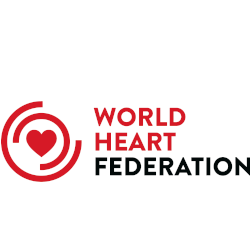Research
Short-term outcome of single-bolus dose of eptifibatide during percutaneous coronary intervention (PCI) in a tertiary level hospital in Bangladesh
Abstract
Objectives: To evaluate the effectiveness of a single bolus dose of eptifibatide in elective percutaneous coronary intervention.
Methods: The outcomes of 85 consecutive patients who underwent elective coronary stenting from January 2007 to December 2007 were assessed prospectively. Forty-four patients received eptifibrate (15 mg single bolus dose) after crossing the lesion and 41 patients did not receive eptifibatide. All patients were treated with aspirin and clopidogrel before and after the procedure and all received a single bolus dose of clopidogrel (300 mg) before the procedure. All patients received weight-adjusted doses of heparin before and after the procedure. The primary endpoint for the study was the 30-day incidence of death, myocardial infarction, urgent repeat revascularization or in-hospital major bleeding. Major adverse cardiac events were assessed during hospitalization and one month post-procedure. CK-MB was measured postprocedure in all symptomatic patients.
Results: Mean age of Group I (Eptifibatide used) was 52.34 ± 8.90 years, and Group-II (Eptifibatide not used) was 49.68 ± 8.87 years. In group-I 38.63% had history of Myocardial Infarction (MI), 9.09% had history of Unstable angina (UA), 52.27% had history to chronic stable angina (SA), 54.54% was hypertensive, 40.90% were diabetic, 63.63% had dyslipidemia; 56.81% was diagnoses as single vessel disease (SVD), 36.36% was double vessel disease (DVD). Among group-II patients, 36.58 5 had history of MI, 12.19% had history of UA, 51.21% had history of SA, 51.21% was hypertensive, 26.82% was diabetic, 60.97% had dyslipidemia, 63.41% was diagnosed as a SVD, 29.26% was DVD. In short term (one month) outcome, Group I patients had statistically significant less complications in comparison to Group-II patient (p = 0.017). In Group-I only 2.27% had Q wave MI AND 2.27% had minor bleeding complication, whereas in Group-II patients 9.76% had Q wave MI, 7.32% had Non-Q MI and 4.88% needed target vessel revascularization again.
Conclusion: Single-bolus eptifibatide is a safe and highly cost-effective alternative to conventional regimens.


